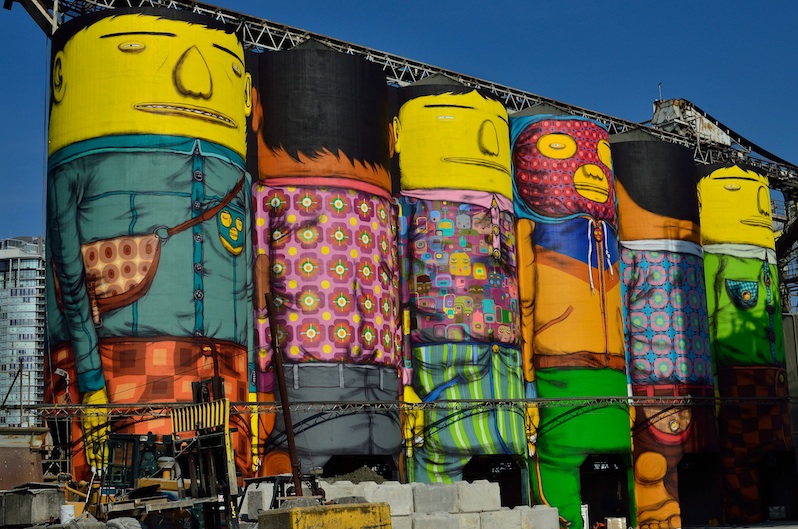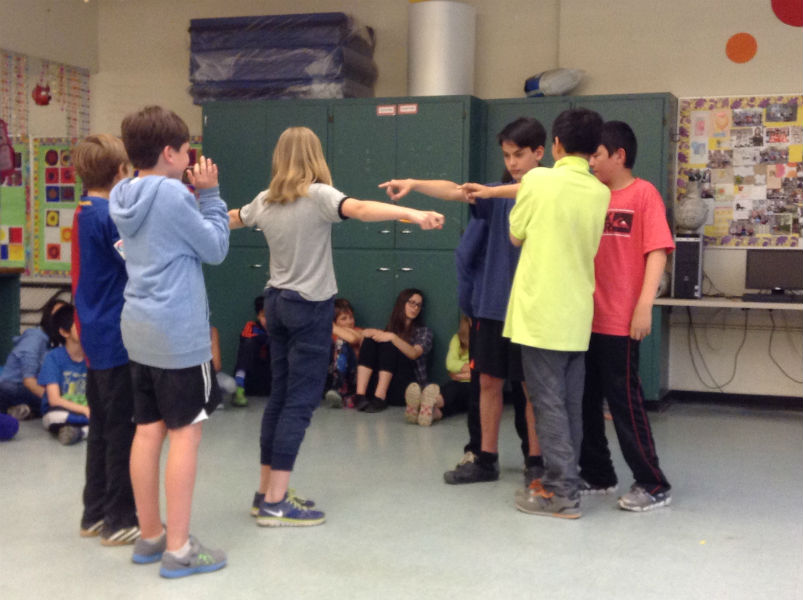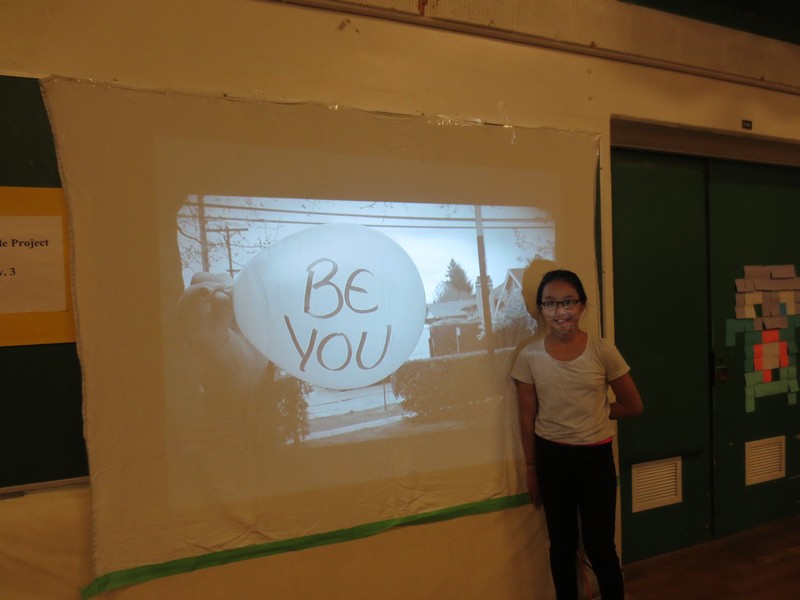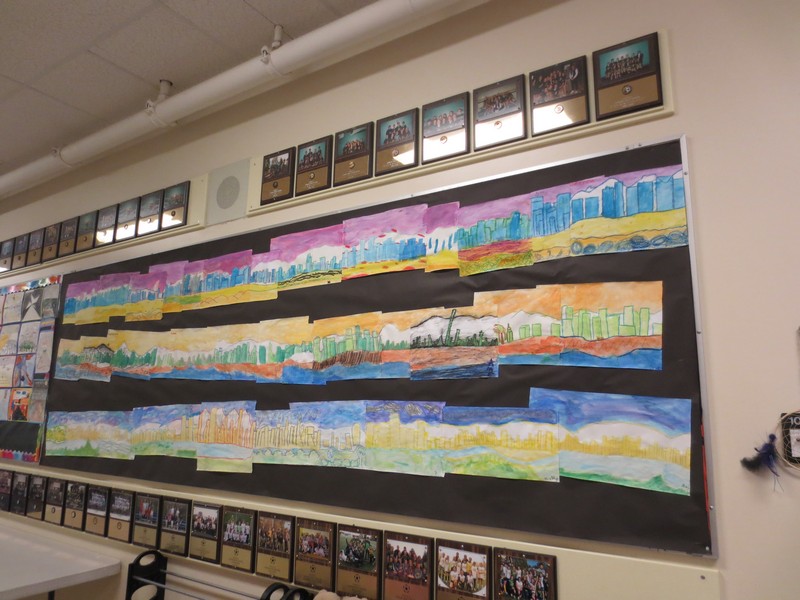Kerrisdale Elementary: Public Art, Power & Populace
Arts Education, Language Arts, Social Studies
School: Kerrisdale Elementary, Vancouver
Teacher: Jane Spencer and Alison Dixon
Artist Collaborators: Rup Sidhu
Class: Two classes Grade 6/7
Overview
Drawing inspiration from Giants and other resources, the students explored the relationship between art, audience, location and politics. Taking the approach of art criticism, and a series of inquiry on the role of government and citizen in creating cities and public spaces, the students were challenged to create a multimedia presentation reflecting and communicating the changes they want to see in the world.
Connection to the Vancouver Biennale Exhibition
Through the visit to the Vancouver Biennale urban mural Giants, the students observed how public art is inclusive and how it positions itself in relation to power and populace.
Other Resources
- Study the process of art criticism with practice
- Visit the Vancouver Art Gallery “Forbidden City” exhibition and discuss how objects and place supported the power of the emperor
- Study of ancient Egypt and inquire into how does architecture, art position itself in relation to people and pharaohs.
- DOXA Film Festival
BIG IDEAS
Public art explores the relationship between art, audience, location and politics.
Guiding Questions
- How does public art inform our understanding of ourselves and our society?
- How does it position itself in relation to power within the culture?
Learning Process/Inquiry challenges:
The lesson concepts and inquiry activities that were taken up during this project include:
Arts Criticism:
- Art Criticism: Description, analyses, interpretation and judging
- Exploration of elements of art
- Exploration of sculpture and street art – who has the power?
Social Studies:
- The role of Government and the role of citizens in creating cities and public art.
Language Arts:
- Exploration of social justice, empathy within the context of the study
- Students understand the basic needs of individuals and how they are met in different ways around the world
- Realization that needs are the same and we can break down borders created by race, nationality, language and religion through art and writing.
Brainstorming: The students were asked; what is the one thing they want to see change in the world. They were asked to do a free-write on that topic. The students were divided into groups and asked to shortlist one topic to focus on as a group. Following that was a group discussion in which the members of the group discussed aspects of the topic that they feel strongly about so that they can represent it in their final projects. Some of the topics included: freedom of speech, terrorism, etc.
Exploring Approaches: Along with the artist and the teacher, students explored different multi-media approaches to their final project. The students were presented with a variety of ideas and techniques (from the artist’s previous projects) that they could choose from and implement with help from the artist and the teachers.
Final project: In groups, the students completed their projects, exploring and representing various aspects of their topics related to the change they want to see in the world.
Cross-Curricular Access
- Language Arts: Students created personal writing demonstrating their understanding of literary techniques to make an emotional connection with the audience.
- Visual Arts: Students created an art project which attempts to interact with their audience in such a way to promote discussions and new understanding of social justice issues.
- Social Studies: The students used the methods and techniques of arts to discuss and represent social issues.
Student Creation
• Mixed media installations
• Poetry
• Photography
• Audio Video presentations
Timeline
Coming soon
Reflection
Coming soon
Related Material
 The Power of Street Art
The Power of Street Art


